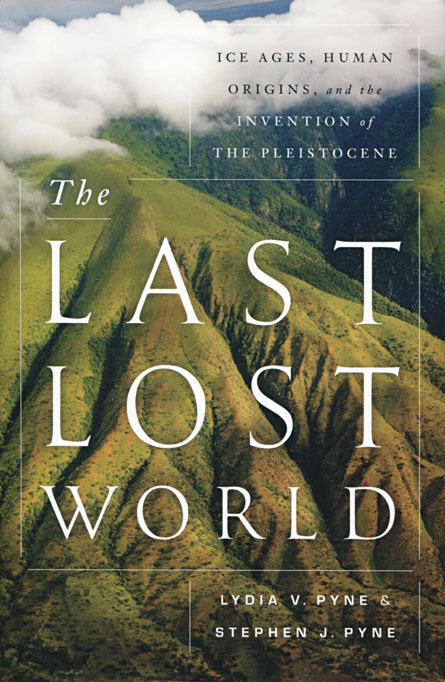The Last Lost World
Ice Ages, Human Origins, and the Invention of the Pleistocene, by Lydia V. Pyne and Stephen J. Pyne

The Pleistocene epoch — lasting from 2.6 million to about 10,000 to 12,000 years ago — was an exciting time: Continent-sized ice sheets advanced and retreated multiple times, and several varieties of humans inhabited Earth. During warm interglacial episodes, hyenas and hippos lived as far north as England; in colder periods, exotic species rendered Europe, in the words of this father-daughter writing team, “a woolly Serengeti on steroids.”
The Last Lost World, however, is not so much about the facts of the Pleistocene as it is about the idea of the Pleistocene — how scientists realized that ice ages occurred, that Homo sapiens shared the Earth with close kin and that the previously unknown phenomena of evolution and extinction shaped the biological landscape. Indeed, the Pynes note, the Pleistocene was “invented” during an intellectual upheaval that changed the scientific landscape as much as the Pleistocene had sculpted the physical world.
In the early 19th century, nascent sciences such as geology severed ties with the humanities, provided a true sense of Earth’s age and guided researchers to find ever more clues to an ancient world hidden in soils, sediments and caves. A great story is buried in this book, but readers must dig through layers of metaphor to unearth it. Nevertheless, an ardent prospector can find enough nuggets to make the excavation worthwhile.
Viking, 2012, 320 p., $26.95







